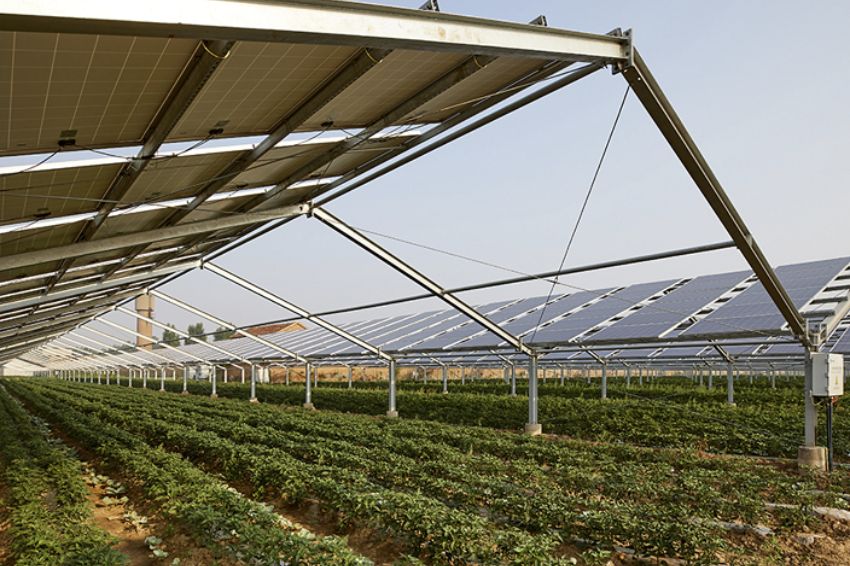EPAMIG (Minas Gerais Agricultural Research Company) has completed another stage of the research, development and innovation project (R&D 671) that will analyze the simultaneous production of food and electrical energy. The project will use pilot units with agricultural plantations under photovoltaic panels.
The initiative is in partnership with CEMIG (Companhia Energética de Minas Gerais) and CPQD (Telecommunications Research and Development Center).
Feasibility studies defined which crops would be used, namely melon, strawberries, beans and lettuce. The project will be carried out at the Mocambinho Experimental Field in Jaíba, in the north of Minas Gerais.
In addition, pastures for cattle will also be worked on at the Santa Rita Experimental Field in Prudente de Morais.
The duration of the project will be 30 months, and will include assessments on productivity, cycle time of each planting, presence of pests, water use efficiency and food quality.
According to the responsible team, they will carry out the analysis based on four modules of 300 m² to 400 m² for each crop. The tests will be carried out with both mono and bifacial plates in fixed and tracker.
“We chose these crops because they have faster production cycles, which fit our schedule, and also because they are representative of the regions where the experiments will be conducted”, explained Pollyana Mara de Oliveira, project coordinator and researcher at EPAMIG.
“We will compare the plant and animal production rates of agrivoltaic systems with those of traditional crops, without photovoltaic panels, to accurately evaluate the results of this innovative practice”, added Pollyana.
Before the project begins, it is still necessary to finalize the acquisition of photovoltaic panels, seeds, fertilizer and other materials for the installations.
According to Pollyana, the structural calculations are expected to be completed this month and execution will begin in May.
For both installations and technical definitions, there is consultancy from the German organization Fraunhofer-Gesellschaft, in addition to funding from a second research project with Secretariat of Economic Development of Minas Gerais and the State Research Support Foundation.
Sustainable Energy in MG
According to data from ANEEL (National Electric Energy Agency), Minas Gerais is the state with the largest amount of photovoltaic energy power with 3.5 GW in 853 municipalities.
“We are entering a new world related to energy production and it is very gratifying for Epamig to be involved in a project like this, which will bring diversified solutions to rural producers”, said Trazilbo de Paula, director of Technical Operations.
“In addition to avoiding the desertification of cultivable areas, we believe that the results will offer the possibility of implementing crops that are suffering from the gradual increase in global temperature, as photovoltaic panels reduce the temperature in the systems and generate greater water retention in the soil”, he added.
The project provides energy analyzes to understand how the microclimate generated by planting evapotranspiration affects the generation of photovoltaic energy. In addition, there will be an analysis of the economic viability of installing these systems on rural properties.
Pollyana also states that the project aims to develop an economically viable model so that producers have an alternative way of generating income.
“It is a project with a great environmental and social impact, as it will create protocols so that the producer does not need to exchange agricultural activity for the production of photovoltaic energy, being able to combine both. We hope that Minas Gerais becomes a mirror for the rest of Brazil in terms of agrivoltaic energy production”, he concluded.
Donorvan Fagundes, PDI, Innovation and Transformation manager at CEMIG highlighted the importance of completing this stage, and how it will influence throughout the project.
“The project is at a fundamental point in research, especially when we refer to the adaptations of crops in their respective ecosystems. The way in which the equipment should be installed, so that we can link the best productivity with the greatest possible energy generation, is the challenge we will face in the coming months”, he concluded.
















